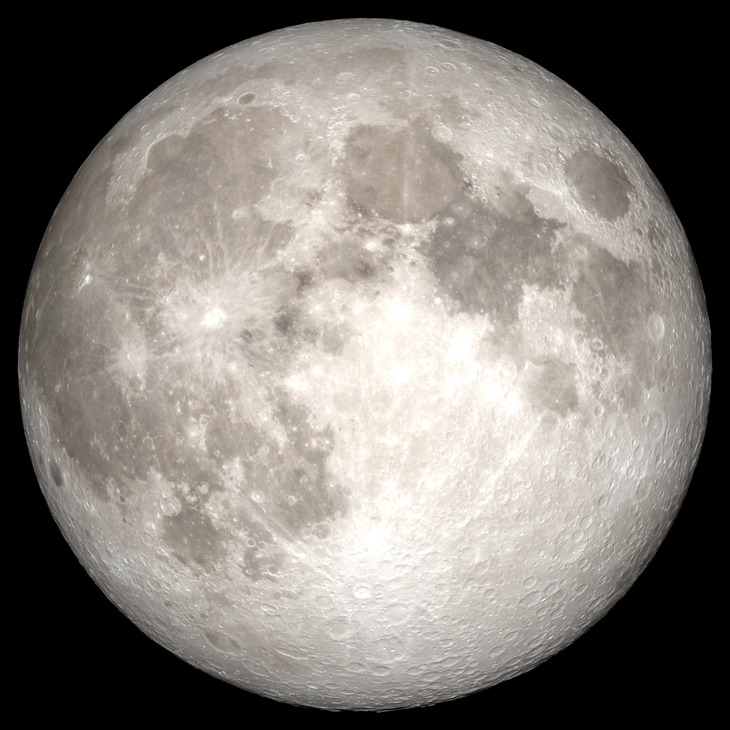Skywatching at home: What do you see in the Moon?
May 6, 2020
By Amy Sayle
If you take late afternoon or early evening walks in your neighborhood, you have probably noticed the Moon on your recent walks.
As I write this, on May 6, 2020, the Moon is waxing gibbous, which means it rises before sunset. It’s now quite close to full moon, so for the next few nights the Moon will look to you like it’s fully illuminated or very close to it. (For you sticklers for accuracy, the exact time of full moon, for everyone on the planet, is 6:45 a.m. EDT on Thursday, May 7, 2020.)
At full moon the Moon is in the part of its orbit around Earth where the Moon is opposite the Sun in the sky. This means a full moon is in the sky the entire night, rising around sunset and setting around sunrise.
But is full moon a good time to observe the Moon? Many astronomers would say no. They’d point out that the lack of shadows at full moon generally makes lunar craters and mountains appear less impressive through binoculars and telescopes than at other moon phases.

However, full moon can be a wonderful time to observe the Moon with just your unaided eye. Here are a couple of things in particular to look for:
1. Find the rays stretching from Tycho Crater, a prominent crater in the Moon’s southern highlands. More than a hundred million years ago, something hit the Moon and left this crater, as well as long rays of material ejected from the impact.
With just your unaided eye, you can see the bright rays. Binoculars will make it easier to spot the crater itself.
If you’re a fan of the sci-fi film 2001: A Space Odyssey, you’ll know Tycho Crater as the location of the alien monolith (fictionally) discovered on the Moon.
2. Notice the maria—the large dark patches on the Moon. Maria comes from the Latin word for “seas” because ancient astronomers mistakenly thought they were bodies of water. They’re actually impact basins that were filled in with lava long ago.
You might imagine that the maria form shapes, such as a face, or a person, or an animal—or anything else you’d like to picture. People all over the world have observed the Moon and imagined shapes in it, including a fox (Peru), a three-legged toad (China), and a rabbit (Mexico).
What do YOU see in the Moon? Head outside for an evening walk, look up, and use your imagination! Not a night person? That’s okay—just wait until you can see the Moon in the morning sky. For a while after the Moon gets past its full moon phase, it’ll rise after sunset and will still be in the sky for at least a while after sunrise.
For more skywatching resources, check out our online hub, Morehead At Home. You can join us online—live!—each week on Tuesdays and Thursdays at 10 a.m. Eastern time, for our Morehead At Home: Skywatching sessions.
